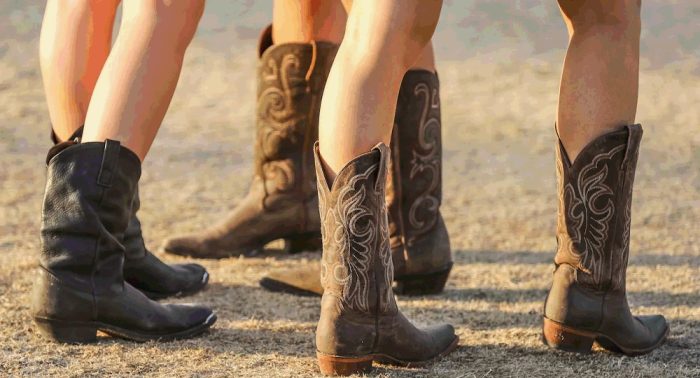
Your Ultimate Guide To The 10 Component Parts Of Western Boots
If you are the proud owner of one or more pairs of western leather boots, have you ever thought about how they are constructed, and further to that, what each of the component parts is of the western boots you are wearing? If not, and you are happy enough to wear your western boots without overthinking about how they are made, then great.
However, if you are somewhat inquisitive, and would like to know more about your western boots, then read on. We are going to highlight the ten main component parts of western boots construction and give you a brief explanation of what each of them is, along with the role they play in making your western boots tough, durable, and comfortable.
#1: Shaft – This is the part of western boots that gives them their distinctive appearance. It is the long tube that goes from the base of the boot to the top of the boot and can come in a variety of lengths and styles.
#2: Pull Taps/Straps – If you have ever had to pull your western boots on with a bit of force, then it is the pull tabs or straps that you probably held on to and pulled with. They are located at the top of the boot on either side of the shaft.
#3: Insole – This part of the western boot is located inside and is what your foot rests on. The best insoles are made from leather, as this allows them to mould to the shape of your foot for maximum comfort.
#4: Vamp – This is what is usually referred to as the upper in shoes. The vamp covers the top of your foot and is part of the boot that usually remains visible at all times, even when jeans are being worn thus, its appearance is an important buying point.
#5: Counter – You will find the counter located at the back of the boot, and it is what sits between the heel and the back of the shaft. It forms a cup into which your heel sits and thus helps provides additional support and comfort.
#6: Outsole – This is part of the boot at the very bottom and is what comes into contact with the ground when you are walking. The material used will depend on the purpose of the boots, including rubber and composites for some working boots and leather, which is the most traditional.
#7: Heel – Another component that defines western boots and is attached to the rear of the outsole. The heel can be shaped in different ways and comes in different heights depending on whether the boots are for fashion purposes or work/riding.
#8: Scallop/Dip – This is the small V-shape you see at the front of the boot at the top of the shaft. Its practical purpose is to prevent the boot from pinching your leg each time you take a step forward when walking.
#9: Welt/Rand – This is what connects the sole of the boot to the body of the boot. It can appear in different ways, such as stitching all the way around, three-quarters stitching, and double stitching.
#10: Stitching – The final component is the stitching which not only plays the essential role of holding different parts of the boot together but can also form part of the decorative design of western boots too.
